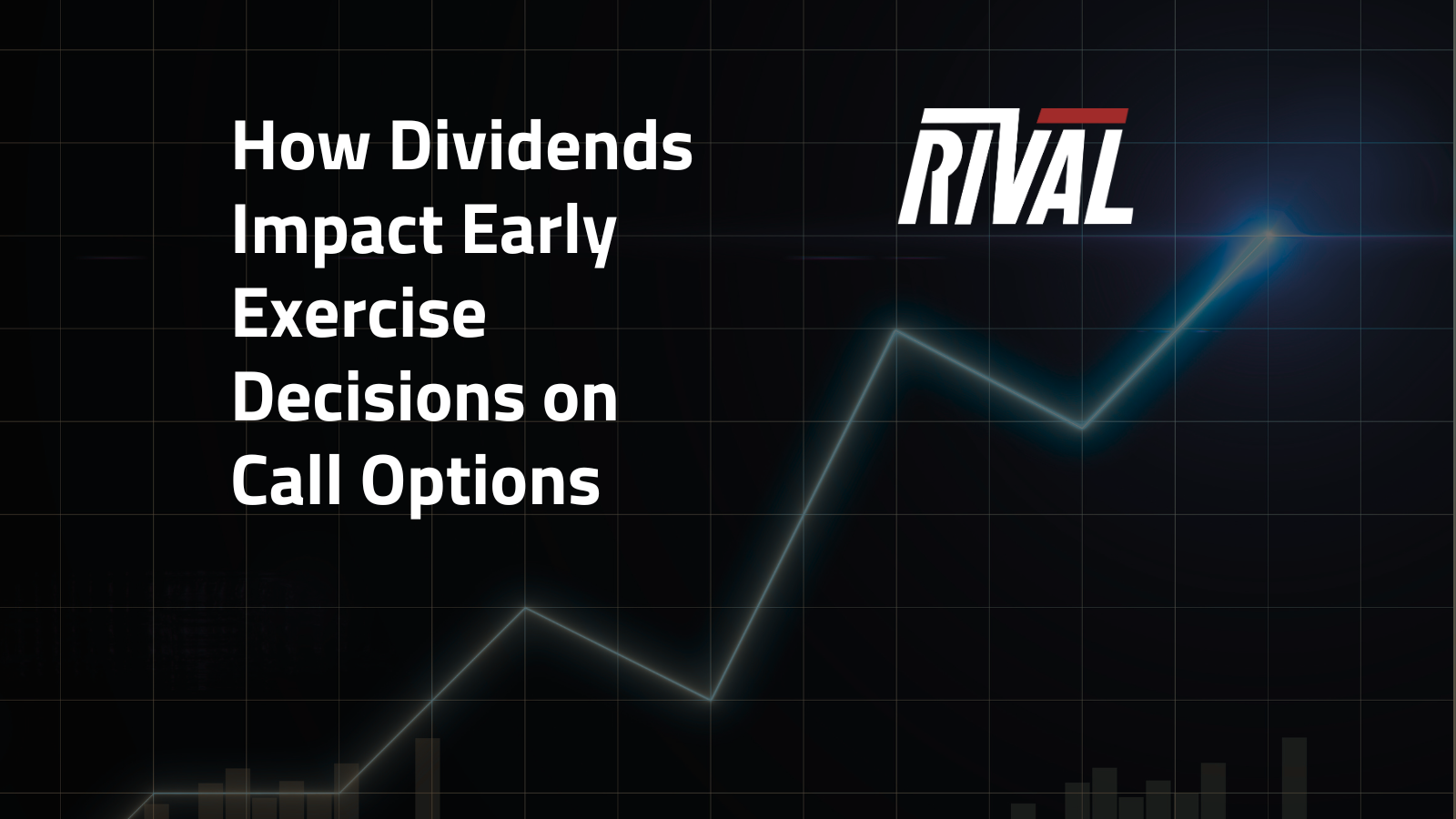
October 8, 2025 · Blog Posts
How Dividends Impact Early Exercise Decisions on Call Options
Dividends play a pivotal role in shaping the strategy behind call options—yet their impact is often overlooked by even seasoned traders. If you’re navigating the world of professional options trading, understanding when and why to exercise calls early around dividend dates can make a significant difference in your returns. Discover how dividends affect option value, how professionals evaluate early exercise decisions, and best practices for optimizing outcomes on the trading desk.
Dividends have a unique ability to distort option values in ways that are often subtle, but materially important. Among professional traders, one of the most common, and most misunderstood, decisions is whether to exercise a call option early when a dividend is on the horizon.
At its core, the decision comes down to how dividends interact with option pricing models. A call option’s fair value can be broken into four key components:
Call Value = Intrinsic Value + Interest Rate Value + Volatility Value − Dividend Value

The first three inputs, intrinsic value, interest rate effects, and volatility, all add to the option’s value. The only component that reduces call value is the dividend. The larger the expected dividend, the more pressure it places on call premiums. If no dividend is expected before expiration, a call option should never be worth less than parity (its intrinsic value). But once a dividend becomes imminent, that rule breaks down, and traders need to rethink their strategy.
A Practical Trading Example
Consider a stock trading at $100 that will go ex-dividend for $2 tomorrow. There’s a 90 call expiring in two weeks, currently valued at 10 with a delta close to 1.
On a professional desk, this isn’t a textbook exercise, it’s a real P&L decision. Risk engines will flag the dividend impact, and execution teams need to determine whether to exercise, roll, or unwind positions based on relative value.
Here’s the step-by-step logic:
- Hold the Option
- After the $2 dividend, the stock is expected to open around $98.
- The 90 call’s parity drops from 10 to 8.
- Result: you effectively lose $2 overnight.
- Exercise the Option
- You pay $90 to buy the stock, which is worth $100 today.
- Tomorrow, the stock opens at $98, but you also receive the $2 dividend.
- Net result: break-even compared to pre-dividend.
- Sell the Option and Buy the Stock
- If the call is trading at parity ($10), selling is equivalent to exercising.
- But if the call is priced above parity, say $10.50, you can first sell the option, collect the extra $0.50 of time value, and then buy the stock to capture the dividend.
- Net result: superior to exercising outright, because you keep the optionality premium.
This is why desks model the trade carefully. A seemingly small decision on the eve of an ex-dividend date can swing outcomes by meaningful amounts, especially in size.
Key Takeaways
For professionals, the rule set for early exercise is simple but strict:
- No Dividend Pending
- Never exercise early. Doing so destroys time value. Even deep-in-the-money calls still carry extrinsic value that is forfeited if exercised prematurely.
- Dividend Pending
- Evaluate exercise versus selling. Institutional desks typically prefer to sell the call if it’s trading above parity, then buy the stock to capture the dividend. That way, they harvest the remaining optionality premium rather than giving it up.
Outside of this narrow scenario, early exercise almost always leaves money on the table.
Why It Matters
Understanding the interplay between dividends and options can dramatically influence P&L and risk exposure for trading professionals. By modeling the impact of scheduled dividends and evaluating early exercise decisions with precision, traders avoid costly errors and capture more value from their portfolios. Integrate these professional early exercise strategies into your options trading playbook, and stay ahead with tools like Rival Risk for comprehensive risk management. For more advanced insights into options education, visit our advanced options knowledge base.
This material is meant for educational purposes only. The information, strategies, and examples presented are not to be construed as trading or investment advice. Rival Systems does not endorse or recommend specific trading or investment decisions and users are encouraged to exercise their own judgement and seek professional advice before making any financial decisions.
Users are urged to carefully consider their financial objective, risk tolerance, and level of experience before engaging in trading or investment activities. Rival Systems is not responsible for any inaccuracies, errors, or omissions in the educational content or for any actions taken in reliance on such content.